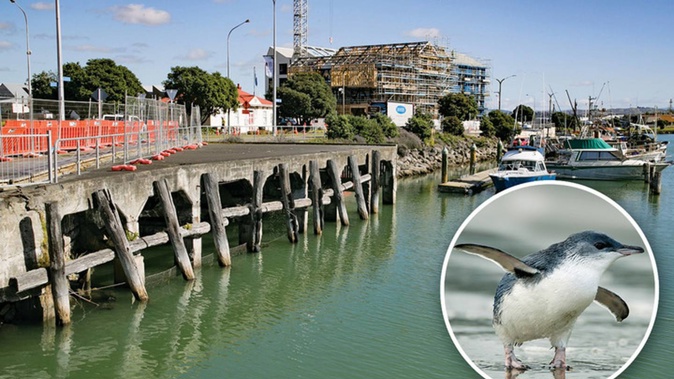
Jull Wharf’s demolition won’t hold up traffic - but penguins may hold up demolition.
Russell Bond, Napier City Council’s executive director infrastructure, said the old wharf near the Iron Pot had reached the end of its life and needed to be removed.
However, the project has “a number of complexities,” not least of which is its proximity to kororā nesting boxes.
“We are working with Dr John Cockrem from Massey University as well as with Napier Port staff to make sure any penguins at the site are safely located and moved,” Bond said. “While works at Jull Wharf are taking place, penguin experts will be located onsite keeping a close eye out for any kororā nesting among the rocks under the wharf and in the revetment that sits alongside the wharf.”
If little blue penguins are found they will be relocated to the Port Sanctuary or to National Aquarium of New Zealand.
Bond said the demolition required a high level of co-operation across agencies including Waka Kotahi NZTA, Napier Port and Napier City Council.
The wharf is built over reclaimed land, some of which is rubble from the 1931 earthquake. To remove it, rocks and logs that form the foundation will be removed by an excavator. The berm, footpath and roadway are all “under threat” as their substrate is linked to the rubble under the wharf. “The berm has already disintegrated and now only rock is visible.”
There have been barriers in place for a number of months as well as a perspex cover over parts of the site, which has been monitored using CCTV cameras and drones.
The perspex screen over the berm to have visuals on the situation underneath.
The initial excavation process, which includes “penguin-spotting’”, will begin on May 3 and last for up to a week. Preparatory work will start on May 1 to ensure the site and equipment is ready to go and the safety of the public is prioritised.
- 'We're not pushing the envelope': Port fends off critics over use of its $175m wharf
- Test berth success for Napier Port's new wharf
Traffic Management Plans will be in place to reduce the speed limit to 20km/h, with a timeline for completion estimated to be about 12 weeks.
“Traffic will continue to flow in both directions with no other disruptions to normal traffic movements.”
Take your Radio, Podcasts and Music with you









